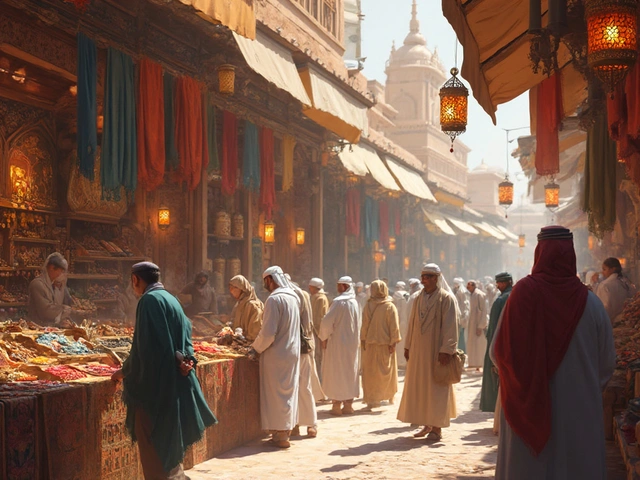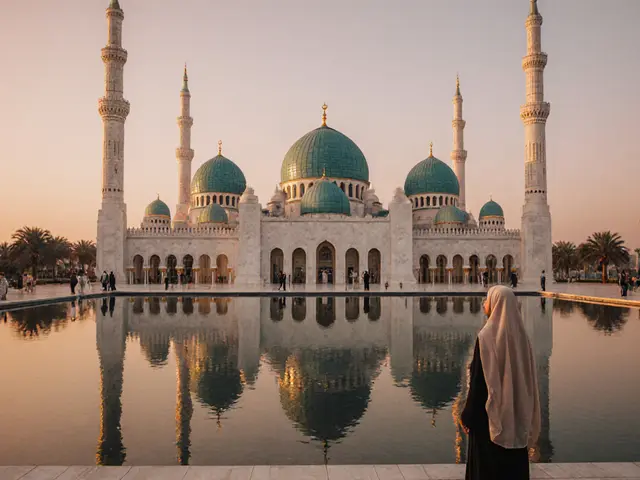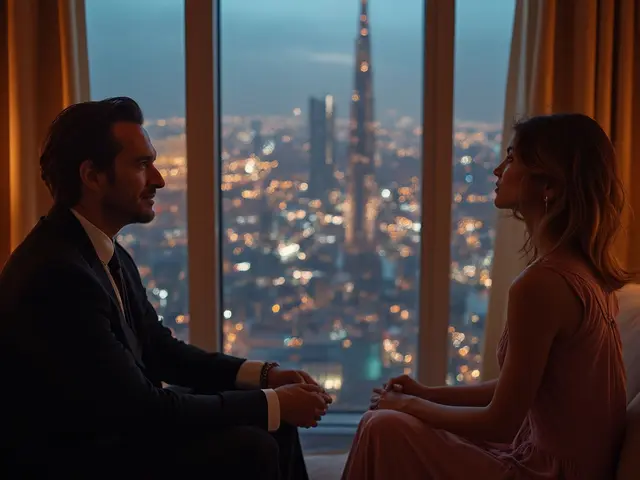If you fly into Dubai at night, there’s this shimmering rectangular outline lighting up the city, standing taller than almost anything nearby. It’s not some wild digital billboard. It’s the Dubai Frame, and let me tell you—this isn’t just another quirky structure tossed into the city’s mix. Dubai’s never been shy about its love for bold architecture or turning the impossible into a must-visit. But even against that backdrop, the Frame has this magnetic charm. Why? First, it really is a giant picture frame—positioned so perfectly between old and new Dubai that you quite literally see the past on one side and the fast-forwarded future on the other. Sounds poetic, but when you’re up there, it’s totally real. And the story behind why it’s there, what’s inside, and how you can enjoy every moment without missing the best bits? Way more interesting than most tourists realize.
The Vision and Story Behind the Dubai Frame
Here’s the plot twist: the whole idea of the Dubai Frame started out as a competition. In 2009, the city wanted to create a new landmark that would wow both visitors and locals—and invite people to see Dubai, literally, in a new light. An architect named Fernando Donis submitted a design so simple and clever it beat out nearly 1,000 other entries. He didn’t go crazy; he didn’t draw a spaceship. He drew a 150-meter high gold frame. That’s 492 feet if you’re measuring in my kitchen (well, I’d be using Luna, my cat, as a hugging post if I tried to stretch that high).
This wasn’t just aesthetics. The Frame is placed inside Zabeel Park, intentionally set so that from one side, you get sweeping views of ‘old’ Dubai—the creek, those spice-scented alleyways, bustling souks, and wind towers where the city first got its heartbeat. Look back the other way, and boom: gleaming Burj Khalifa, sparkling downtown, and highways snaking into the desert. It’s not just architecture—it’s like you’re looking at two completely different cities united by one dazzling golden rectangle. The exterior is finished with more than 15,000 square meters of gold-colored stainless steel, echoing Dubai’s love for a touch of glam.
Now, here’s a spicy nugget—when the Dubai Frame opened to the public on January 1, 2018, it became an instant city favorite. Over 2 million visitors flocked here in its first two years, and it’s still drawing crowds. Don’t expect any subtlety. Locals even call it Dubai’s “largest picture frame,” and this statement isn’t tongue-in-cheek. Nothing about Dubai is accidental, and this frame fits into the city’s larger vision for celebrating both its roots and ambitions.
If you love quirky records, here’s one: the Dubai Frame holds the unofficial “world’s biggest picture frame” title. Sure, some museums and websites nitpick about the technicalities, but nothing compares to standing inside it, staring at the 93-meter-long glass bridge with your knees wobbling (yep, it’s a thing). The idea was always more than just an Instagram spot—it symbolically frames Dubai’s progress, and you’ll find that referenced even in the tiniest museum placards inside the structure.
Exploring the Experience: What Awaits Inside
Don’t show up at the Dubai Frame expecting to spend a whole day, but don’t rush through it either. The visit is meticulously curated. As you enter, you walk through interactive exhibits, some with holograms, old photos, and those wild videos about Dubai’s transformation from a sleepy fishing village to today’s metropolis. If you’re traveling with kids, the animations explaining ancient Emirati life and the “Dubai of the future” always get them wide-eyed.
Once you’re done with the ground floor, you’ll hop into a glass elevator—yep, you’ll watch the city shrink beneath you as you zoom up to the top in just about 75 seconds. Step out, and you’re on the Sky Deck. Think of it as a 360-degree theater with floor-to-ceiling windows. Eastward, you face those narrow, bustling spaces where traders once shaped Dubai’s fortunes. Switch sides, and suddenly you’re part of that dramatic skyline you see in every “Visit Dubai” video.
But the pièce de résistance? The glass-floored walkway stretching between the towers, suspended 48 stories up. Some try to breeze across like it’s nothing, others freeze mid-step—I’ve seen people edge forward while gripping the handrail so hard their knuckles turn white. If your adrenaline isn’t up yet, try lying down and looking through the glass—it feels like floating high above the trees and pathways of Zabeel Park. At sunset, with the city aglow below you, every step feels like an adventure.
There's a little café on the sky deck, perfect for catching your breath or snapping that perfect coffee-cup-against-the-city shot (even Luna would approve, if only cats drank coffee). As for crowd tips: try weekday mornings or right before closing, unless you adore lines. The Frame keeps entry controlled, so things move smoothly even at busy times.
Don’t skip the exhibitions beneath the structure. They use AR and creative projections to whisk you through scenes of Dubai’s past and throw you into a dazzling guess at its future. Imagine drone taxis, “interactive” building facades, AI-driven city parks—the kind of stuff you’d expect from the world’s most ambitious city planners.
Got mobility challenges? The Frame is super accessible. There are ramps, elevators, and staff ready to help. If you’re planning to bring older relatives or toddlers, don’t let the size intimidate you. It’s more gentle thrill than heart-racing terror, unless (like me) you have a bit of a fear of heights—then it’s an even better memory!
Insider Tips for a Memorable Visit
So, you’re ready to see the most Instagrammable spot in Dubai without wasting time or getting lost? This is where the survival hacks come in. First up: tickets. You’ll want to book Dubai Frame entry online ahead of time, especially during winter, weekends, or school holidays. Early and late entry slots are the quietest, plus the light is better for photos.
Plan to spend about 90 minutes to two hours there. That’s enough to see everything inside, soak in the views, and get your selfies—without rush or regret. For the best skyline shots, aim for golden hour (usually around 5:30–6:30 pm). I know, it sounds cliché, but Dubai’s sunset pouring through those gold panels is next-level. If you’re all about city lights, try coming at night; the city feels like it’s been dipped in jewels.
Pack light: bags go through security checks (think airport-style). Try to avoid carrying bulky backpacks or anything that screams ‘picnic at the park.’ You can bring a water bottle, but no food—and absolutely zero drones. The staff follow the rules strictly. For those always on Wi-Fi, there’s decent connectivity around the skydeck (handy for instant uploads or video calls to make distant friends jealous!).
You don’t need fancy gear, but if you’re serious about photography, a smartphone with a wide-angle lens gives great results. Reflections are part of the fun here; embrace them instead of fighting. And if you’re set on family photos without random strangers in the background, ask a staff member—they’re used to playing photographer and are impressively patient even when toddlers get squirmy.
Gifts and souvenirs? Skip the central stands and find the boutique at the exit—way less busy, stock rotates quickly, and if you’re lucky, you’ll find cool Dubai-themed art in there too. For a calmer post-visit sit-down, head for the hidden benches in Zabeel Park, just beneath the frame. Locals use that spot for evening walks—it's surprisingly chill, and there’s no rush to leave.
If you’re coming by metro, the nearest station is Al Jafiliya—then it’s about a 15-minute walk through tree-lined paths. Taxis drop right at the entrance if you want to save steps (a blessing during summer heat). And one last tip: check the schedule for city festivals or local holidays. If there’s a light show or celebration planned around the Frame, it’s double the experience, but tickets sell out fast.
Fun Facts, Visitor Data, and Why It’s More Than a Tourist Spot
One of Dubai’s lesser-known talents is how it reinvents public spaces, and the Frame is a top-tier example. For locals, it’s as much a source of pride as it is a spot for weekend walks. The structure hosts art events, Ramadan celebrations, and even yoga classes at sunrise—there’s a year-round buzz beyond normal hours. Each Eid, the whole façade lights up in breathtaking displays visible for miles around.
The Frame sits at the center of a 47-hectare park, which attracts over 5,000 visitors daily during cool months. According to Dubai Municipality stats from 2024, annual footfall reached about 1.3 million, with international tourists making up 65%. That mix creates a cool energy: lots of languages, selfies in every pose, and locals who know all the shortcuts.
If you’re a data fan, check this out:
| Year | Annual Visitors | Percent Tourists | Events Hosted |
|---|---|---|---|
| 2019 | 1,000,000 | 62% | 35 |
| 2021 | 1,110,000 | 66% | 42 |
| 2024 | 1,300,000 | 65% | 50 |
The Frame also offers one of the most affordable “aerial” experiences in Dubai—ticket prices often stay far below skyscraper decks like Burj Khalifa or Sky Views, making it a favorite for anyone on a budget who still wants those wow-factor photos. It’s ideal for school trips, date nights, or a solo-escape when the busy city gets too much.
And did you know you can spot everything from camel parades to New Year fireworks from up there? If you're lucky and the skies are clear, you can see as far as Sharjah, the neighboring emirate. During Dubai’s annual shopping festivals or National Day, special exhibitions and pop-up art shows set up beneath the Frame—plus you might just spot some local food trucks braving the crowds.
Wrap it all up, and here’s the big secret: Dubai Frame isn’t just about big heights or golden glitz. It’s where stories cross paths. Snap a selfie with the skyline, catch a history lesson, or just gaze down as joggers weave below and neighbors meet for a chat. Whether you’re tourist or local, you walk away seeing the city just a little differently. Not bad for a giant rectangle, right?



